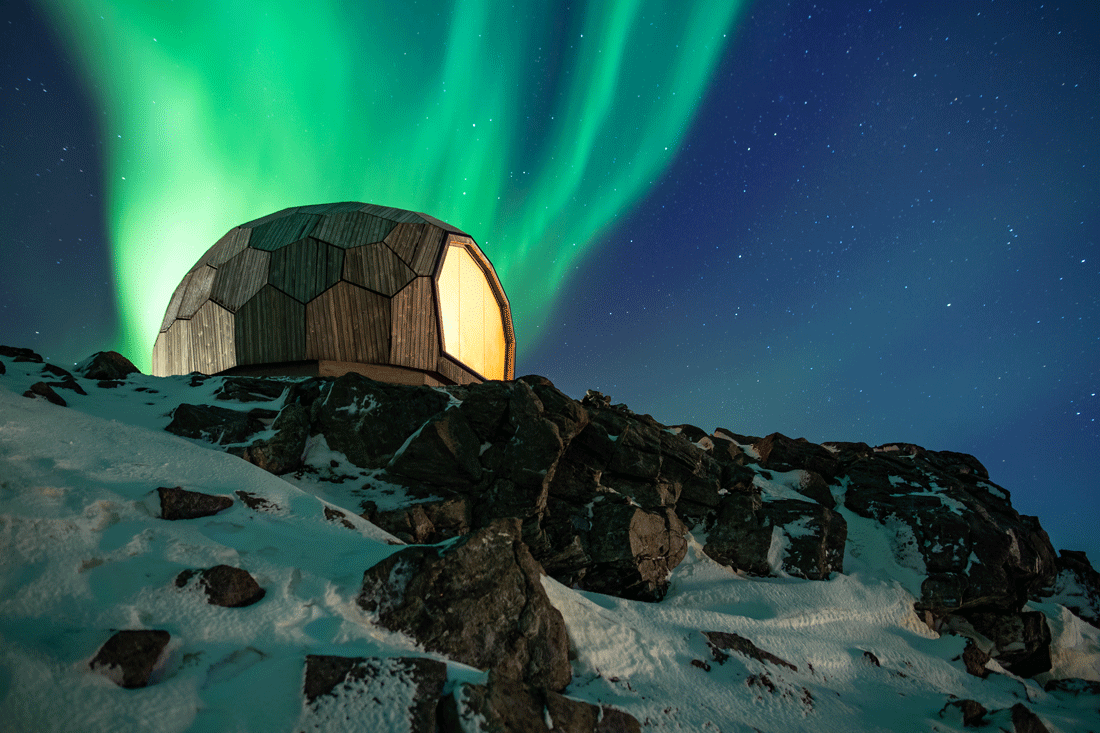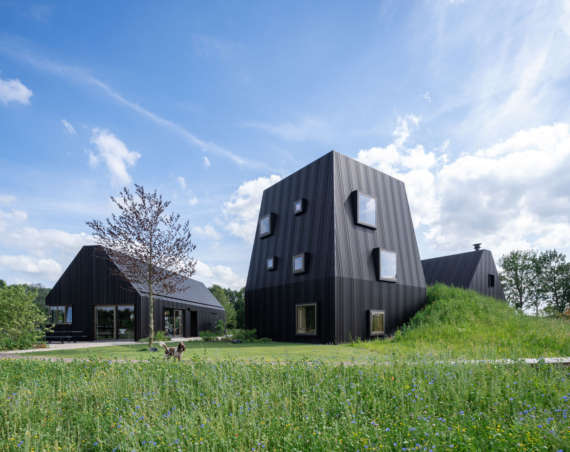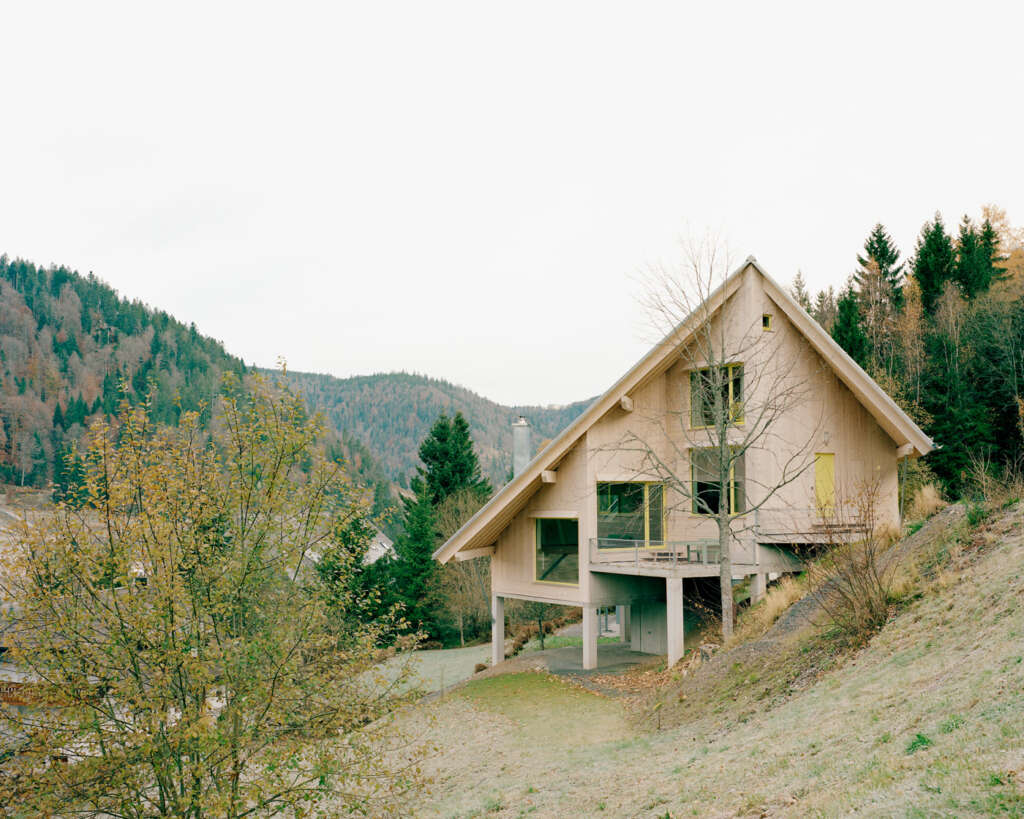
House on a Hill
Architect: AMUNT Nagel Theissen
Location: Menzenschwand, Germany
Type: House
Year: 2022
Images: Rasmus Norlander
Building task, building site, building plot
The following description is courtesy of the architects. The private home is the dream of living par excellence, as the numbers prove every year. But does it always have to be one’ own home or could it not also be a house for many? Living the dream of owning a home temporarily in a beautiful environment and an interesting architecture? Is it enough for many to experience this dream now and then on vacation, then when you have time to live?
In the course of the sustainability debate, vacationing in Germany has again become much more popular, and many holidaymakers are amazed to discover the varied landscapes and beautiful countryside between the coast in the north and the Alps in the south. Sustainable travel is on everyone’s lips against the backdrop of climate change. Our clients, who spend their vacations exclusively in Germany, approached us and wanted exactly that: a sustainable vacation home with quality architectural design and to share it with many. The destination of their choice is the picturesque village of Menzenschwand in the southern Black Forest, a region that – like many rural regions – has suffered from the departure of younger generations in recent decades and is also struggling with declining numbers of vacationers due to the increasingly warm, snowless winters without skiing options.
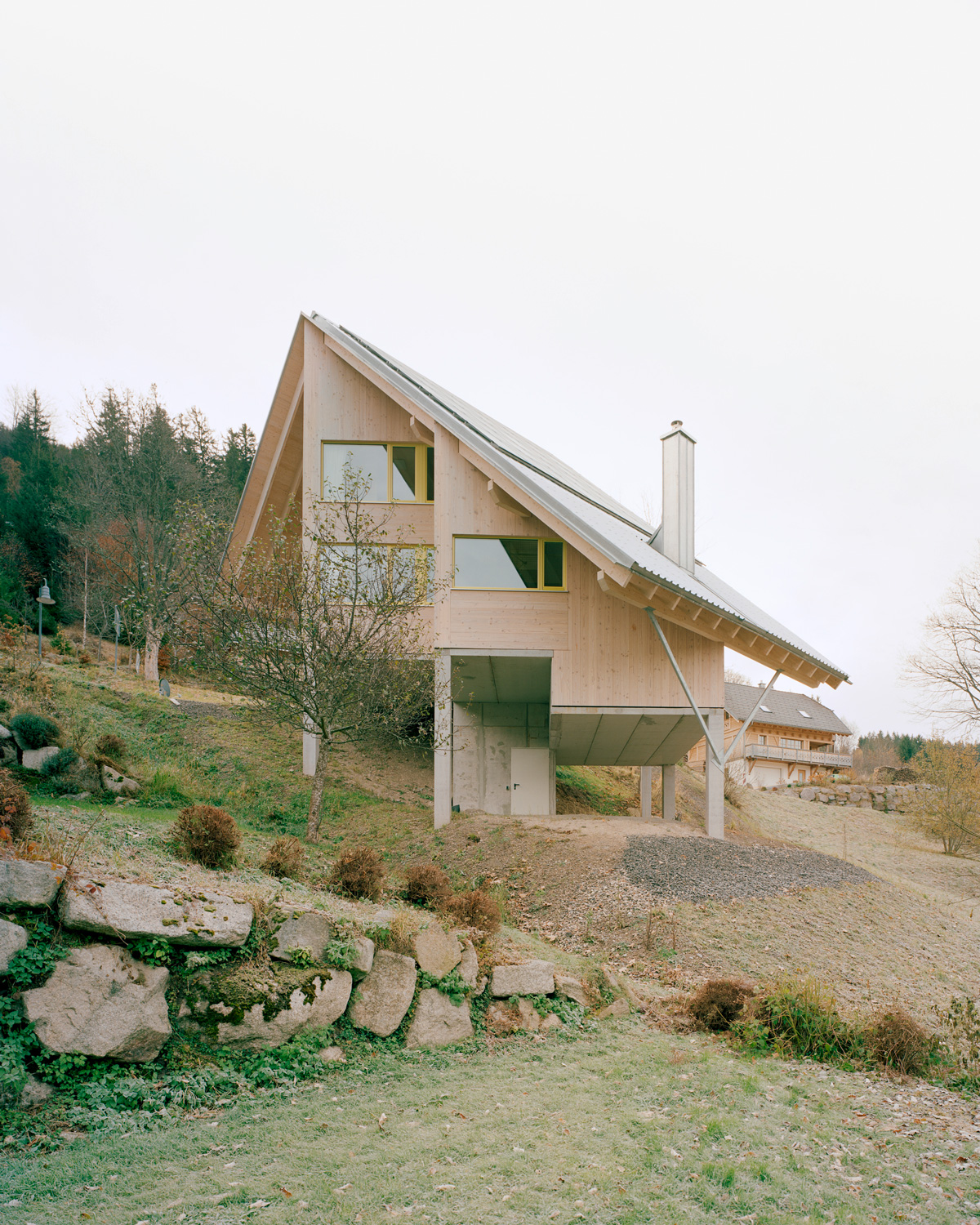
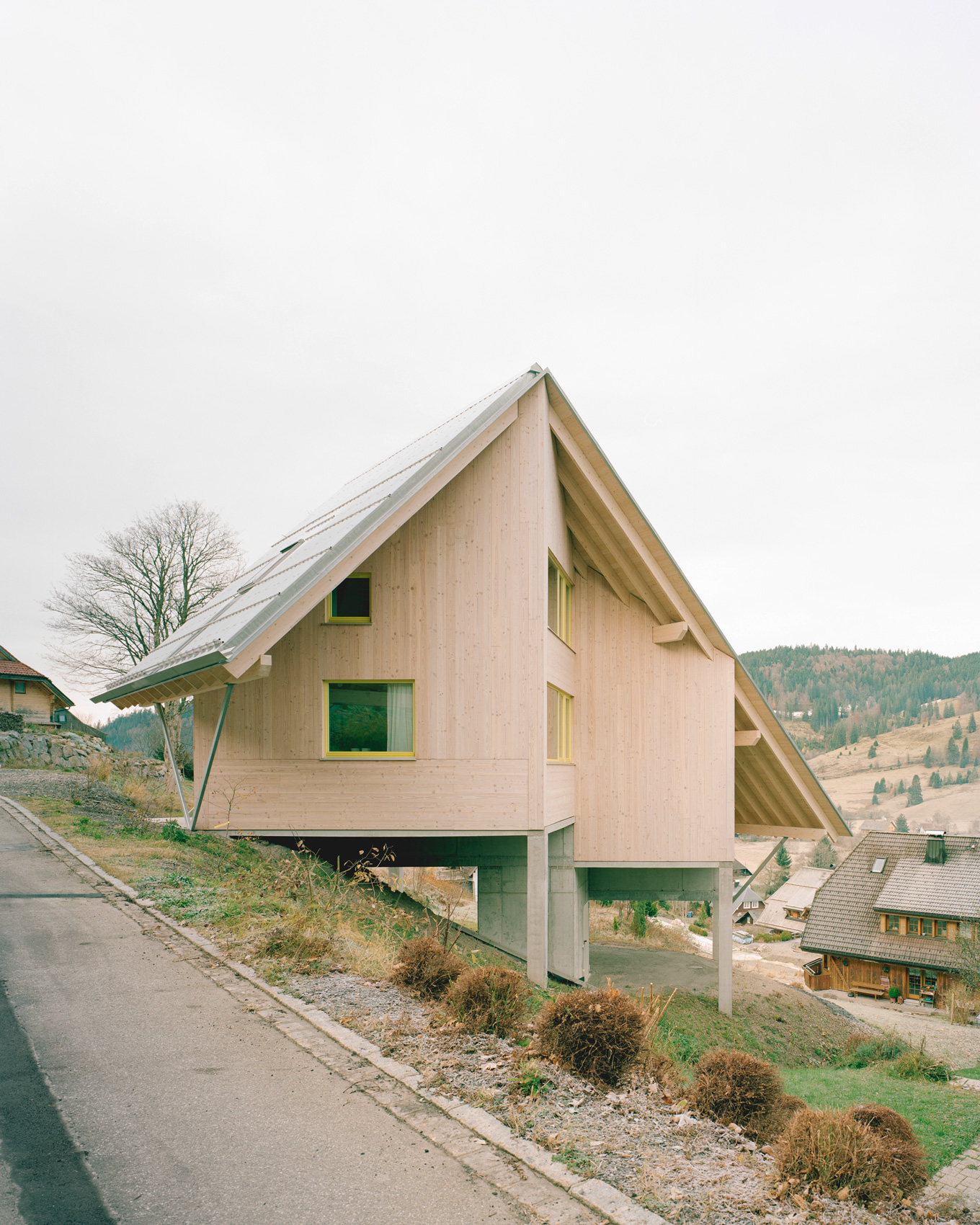
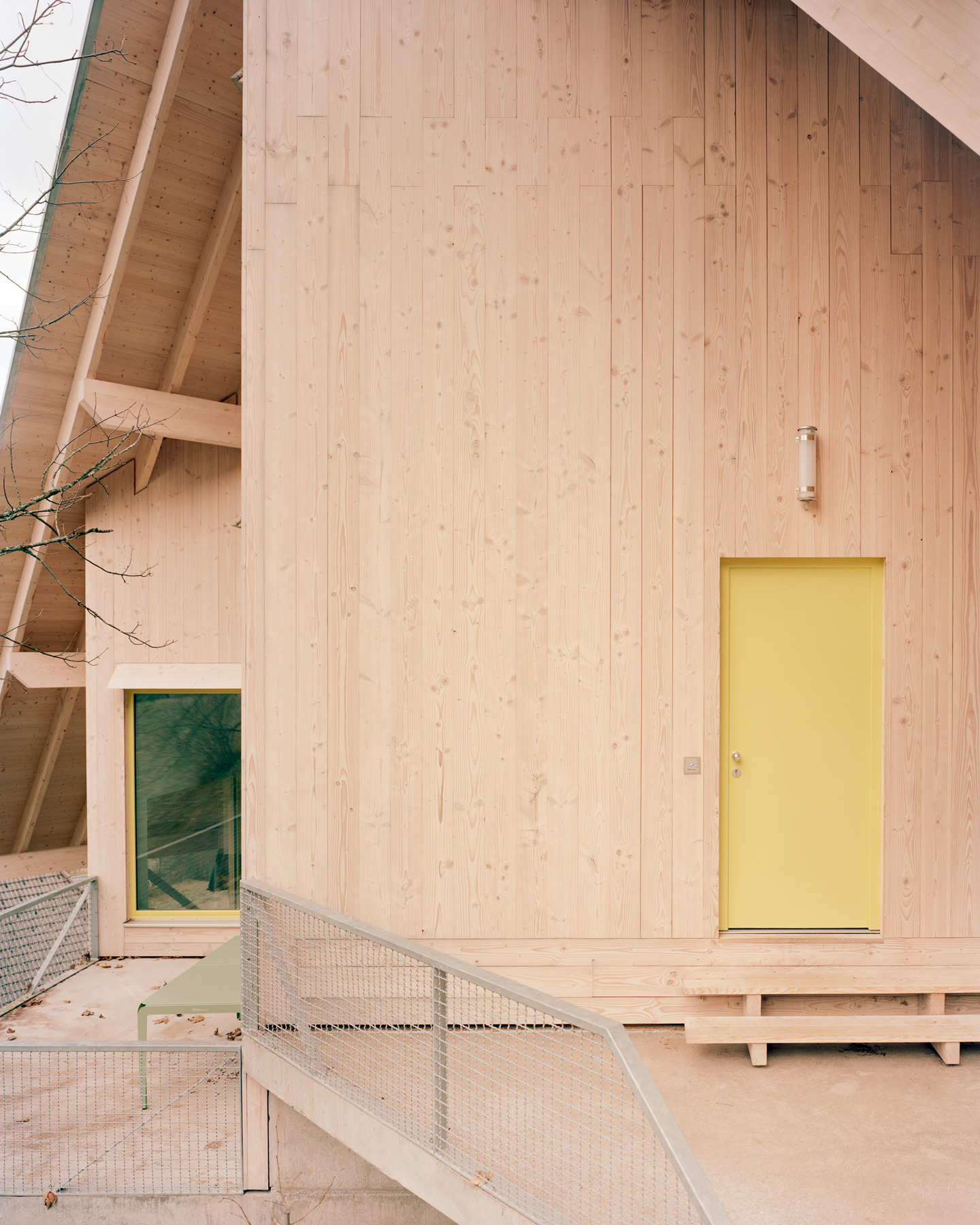

The building plot is located on a beautiful southwest-facing hillside with a view of the beautiful valley and the village. In designing the building, we were guided by the idea of capturing the beauty of the landscape and making the steep slope tangible in the house – wandering vacation.
The roof pitch, ridge direction, eaves heights and roof overhangs are defined in the development plan and, together with the trees worth preserving, were a challenge and gave indications for the development of the cubature. Only the necessary space was built, and a basement was not required in order to minimize the intrusion on the property.
Spatial concept
The compact 110 sqm timber house was elevated to generate storage and lounging space under the house, with ground level access from the street. The triangular covered front yard provides space for sleds, skis and hiking boots. From here you enter the house and get into the generous two-story living space with a variety of spatial situations, stepped by spatial steps, following the topography of the plot: Entrance with wardrobe, a few steps down kitchen and dining area with a large balcony under the maple, and finally, more steps lead to the living and fireplace room.
While wandering through the house, the wanderer is accompanied by numerous, vast views into the valley and the surrounding area, a feeling of being inside and outside at the same time. The slender roof shell with the large roof protrusions is placed protectively over the two building volumes, which are angled at 45° to the slope. The resulting floor plan organization appears abstract, but its intention is to enable a variety of relations to the site without “sticking” to the neighbouring buildings. In addition, the sun is captured perfectly from the south.
A central, open staircase leads via a gallery to the upper floor, where small, intimate and very different individual rooms contrast with the generous living space under the protective roof. Maximum-sized openings repeatedly bring the landscape into the house. The various sleeping settings are designed to please and support the vacation feeling: a bunk bed, similar to those in mountain huts, a cosy bedroom reminiscent of an alcove, the sleeping gallery under the roof and a bedroom with a view of the stars. In total, the abode offers eight varied sleeping places for families, friends and couples.
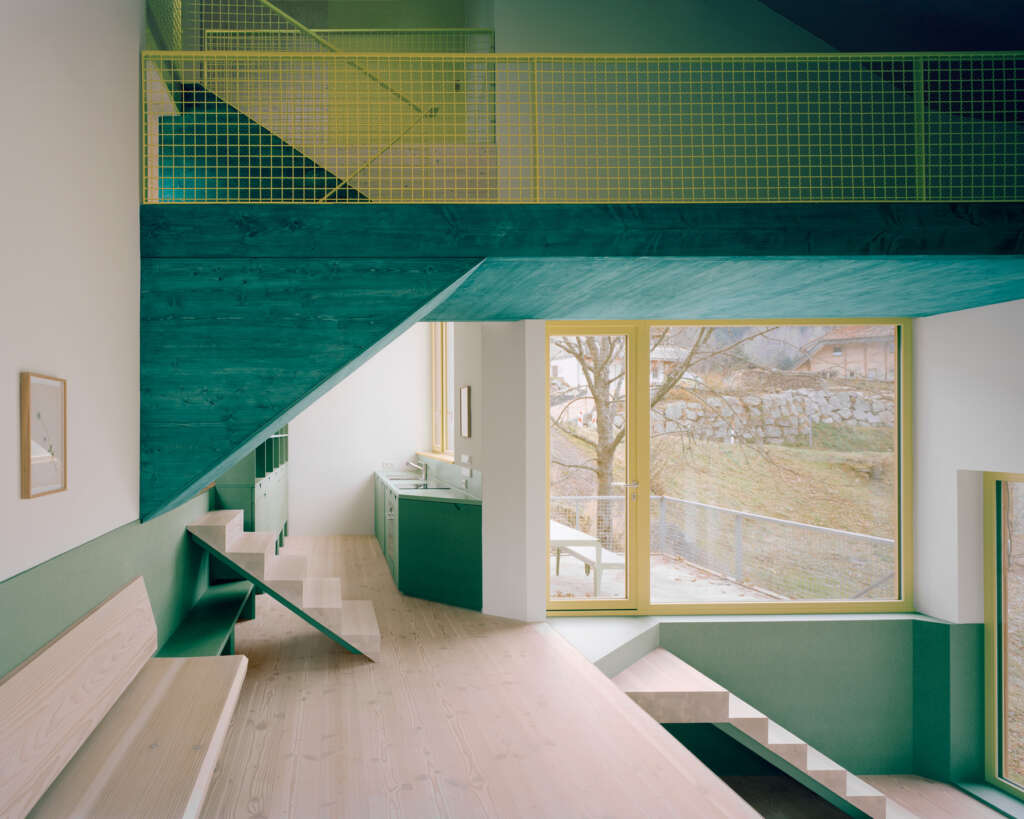
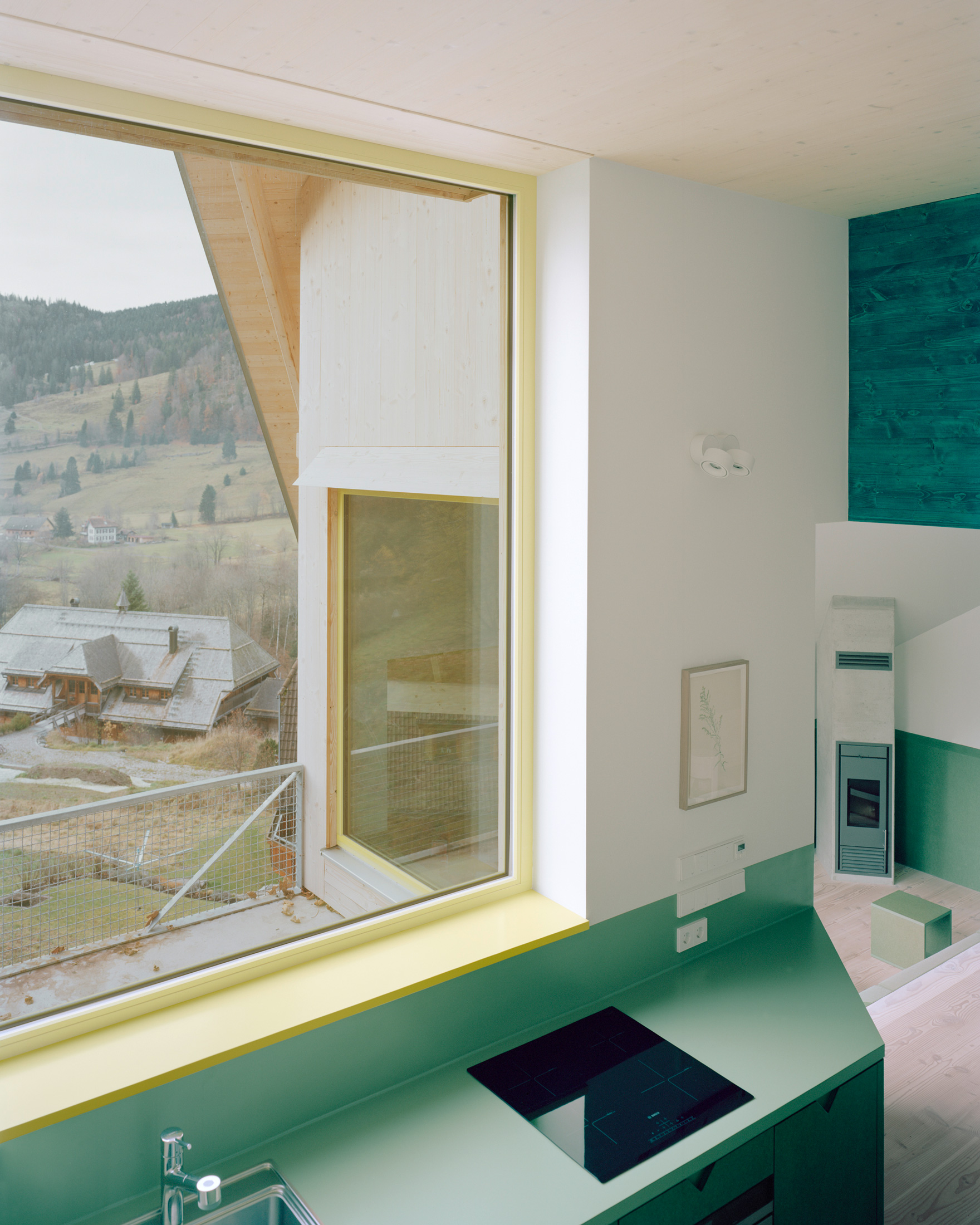

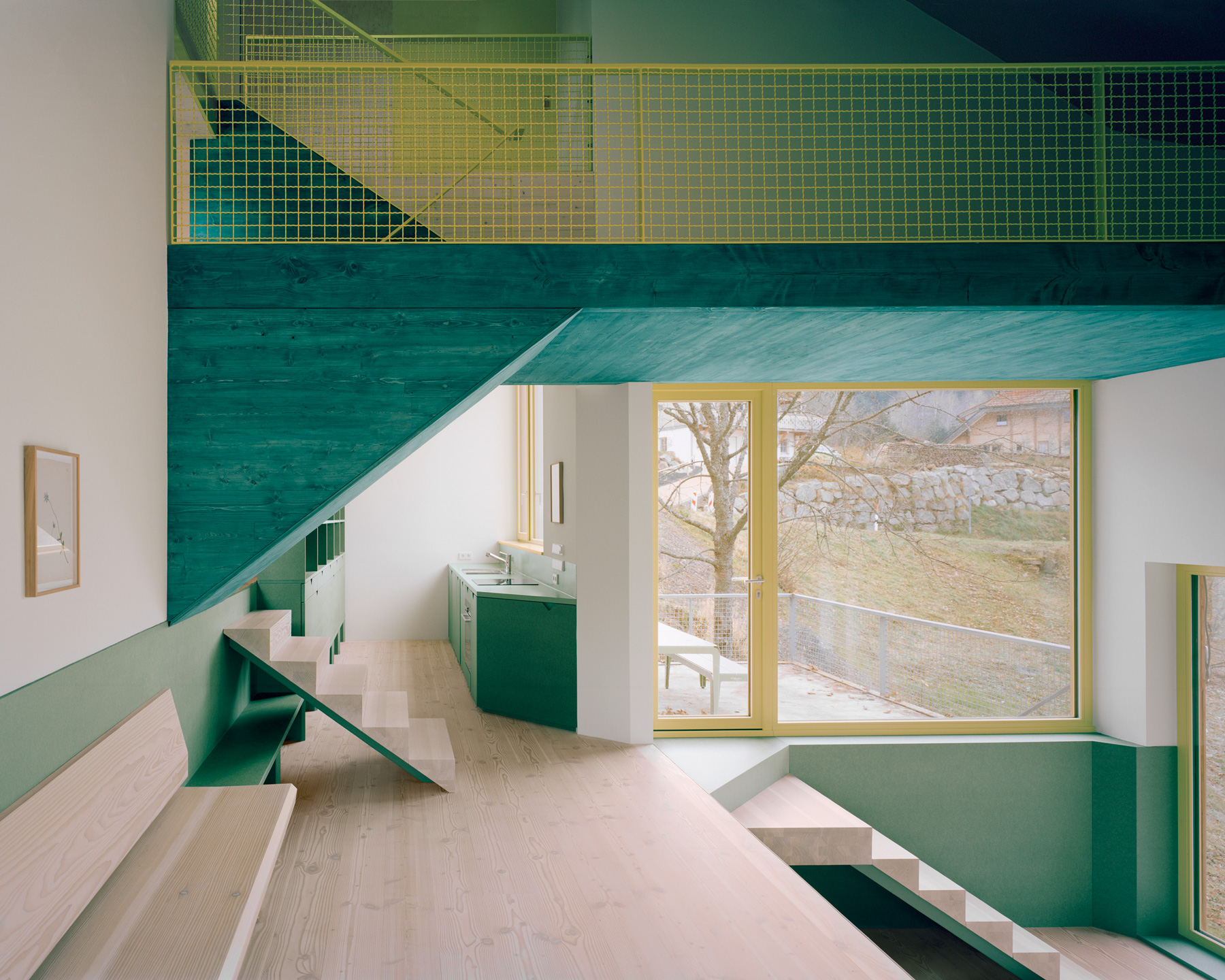
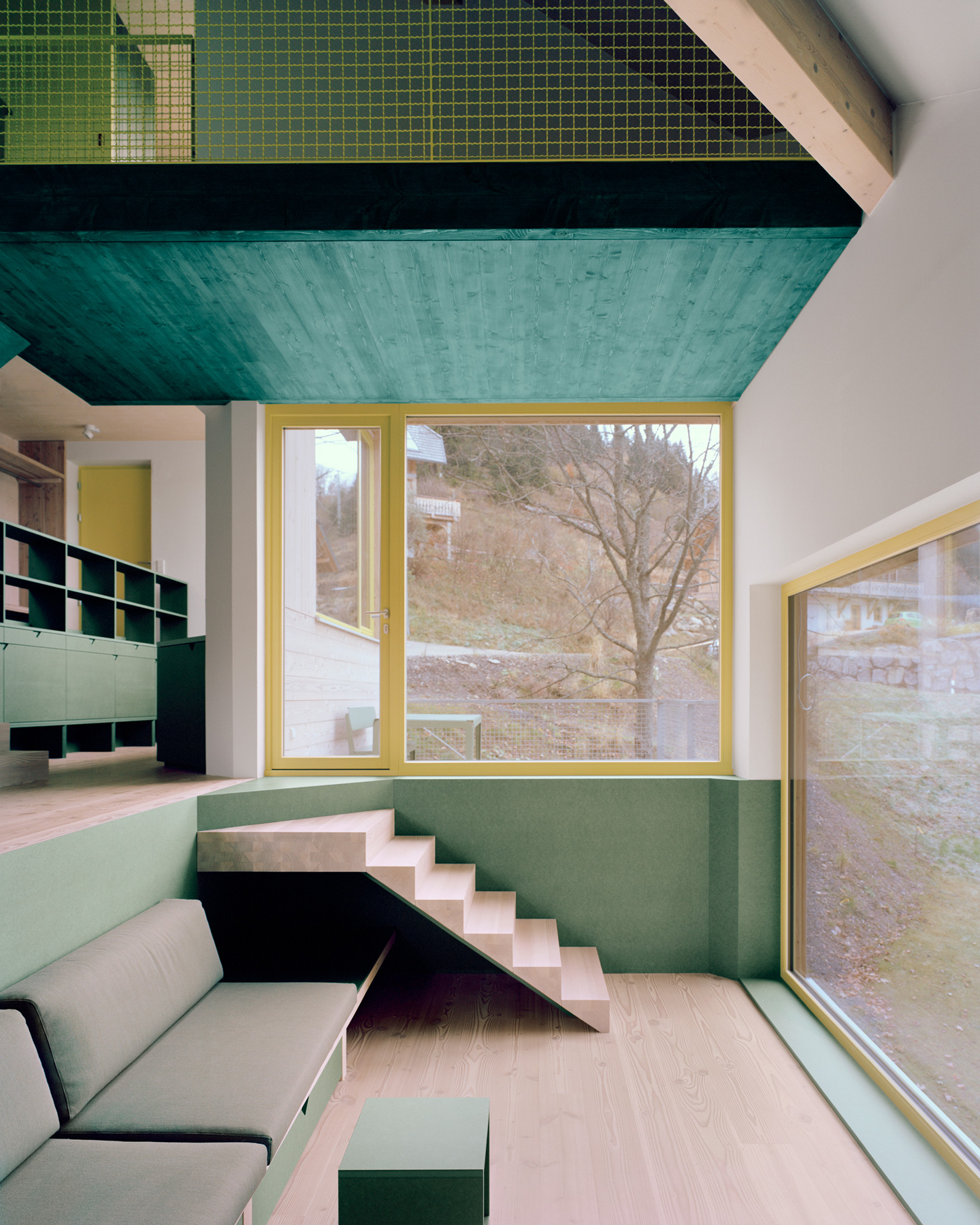
Energy concept
The energy concept was a challenge, since the house’s occupancy can be very fluctuating, there is no gas connection, and the neighbours should not be bothered with noise emissions from an air-source heat pump. What could be the solution here – a large or small buffer tank, heat pump, geothermal heating, or something else?
In an intensive cooperation with the energy planning company, an experiment has been developed that is mainly oriented towards flexibility. Essential to the well-insulated wooden house are window seam ventilation, infrared heating panels and the use of electricity provided by the large-scale photovoltaic plant on the roof. Recent studies and a doctoral thesis prove the efficiency of this solution. The house itself is used as a heat storage, the wood stove supports the heat production and heating and provides cosiness in the house.
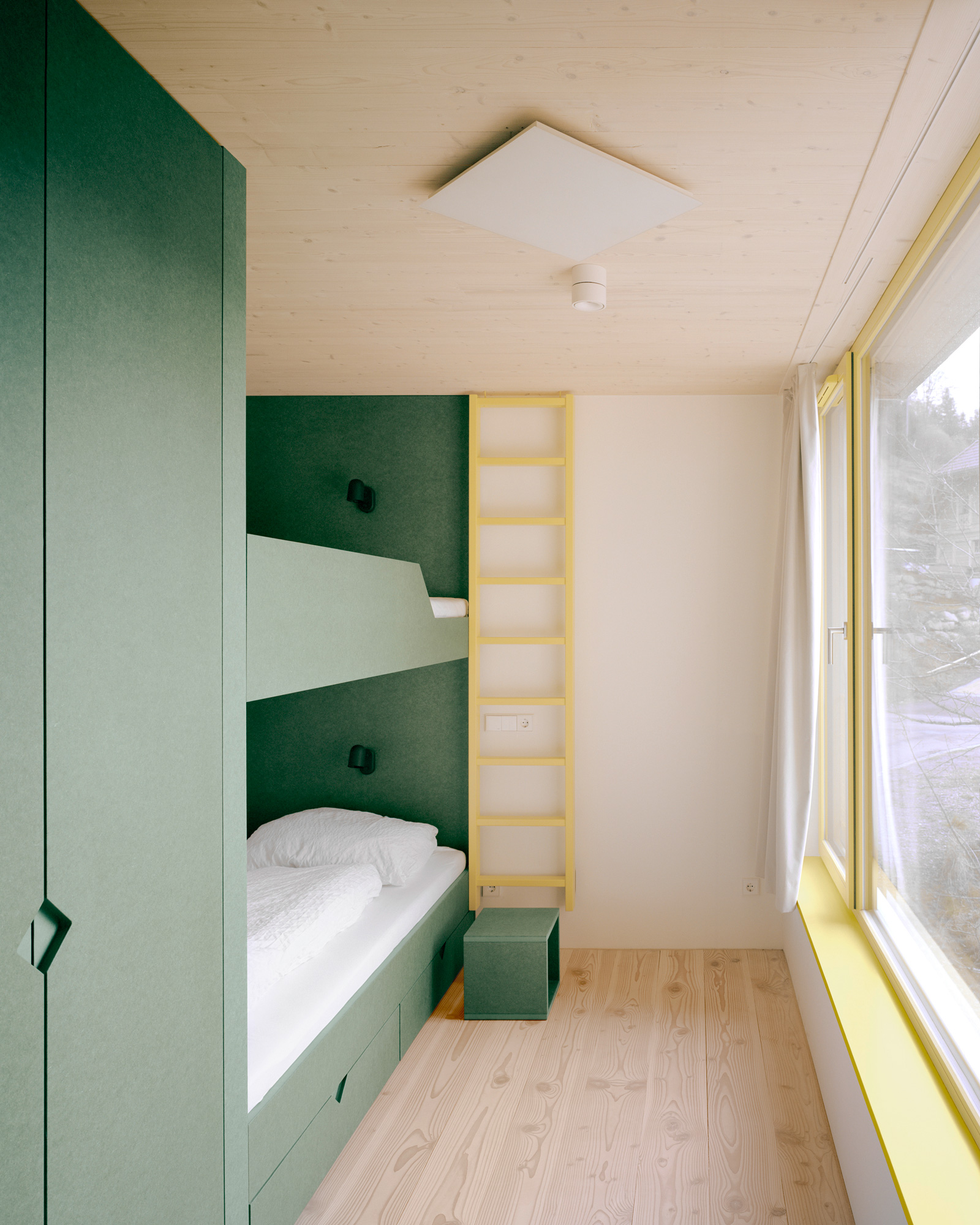
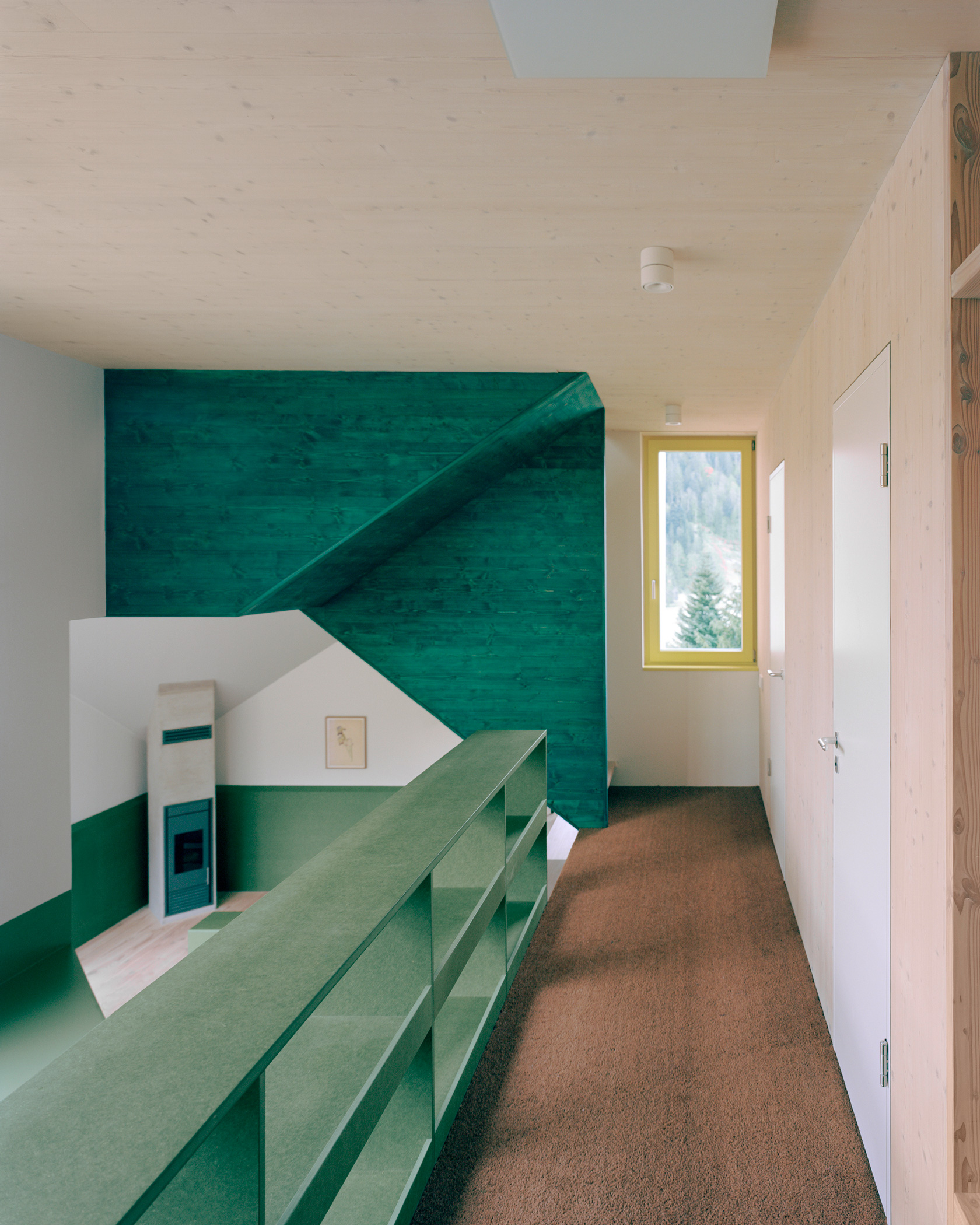
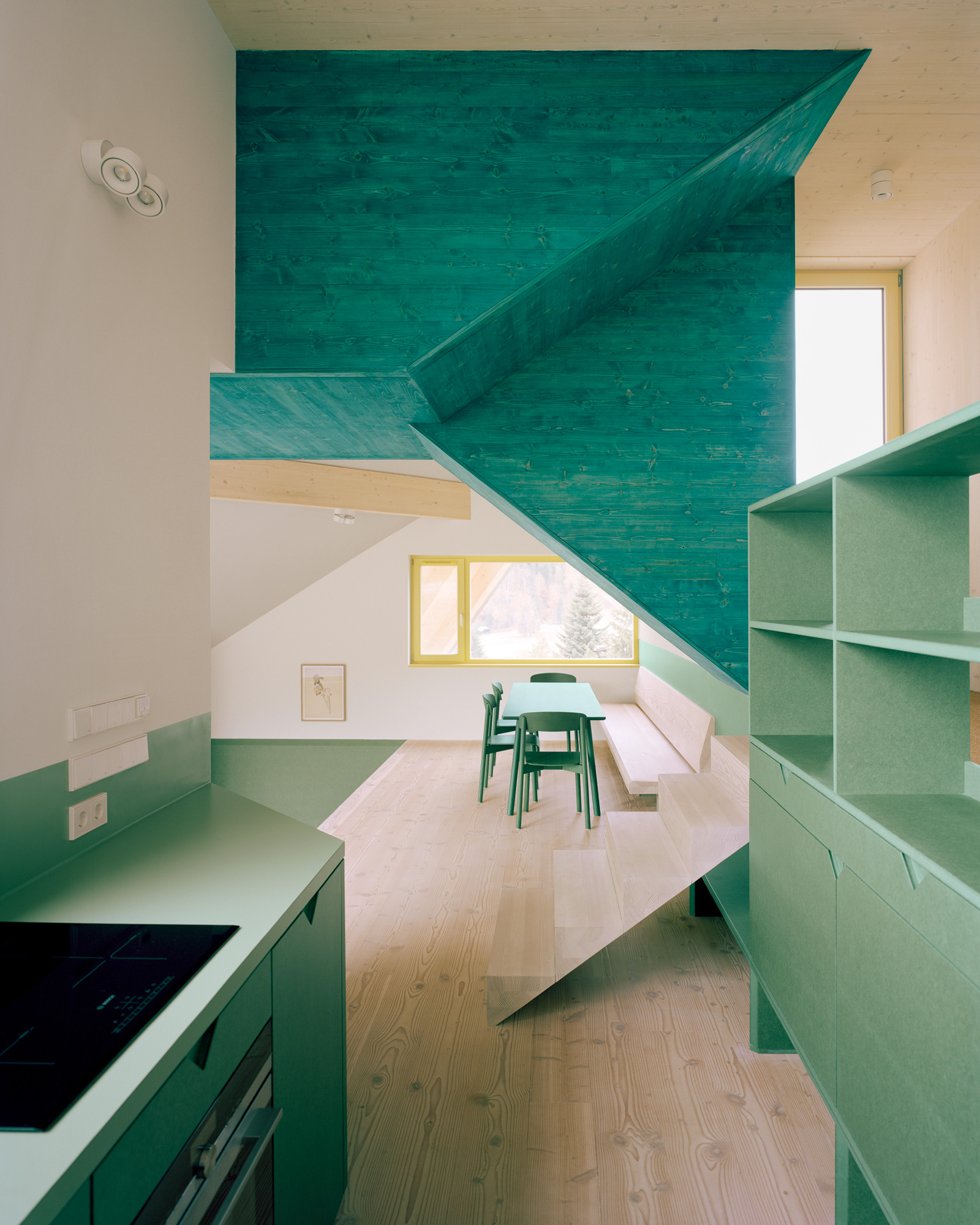
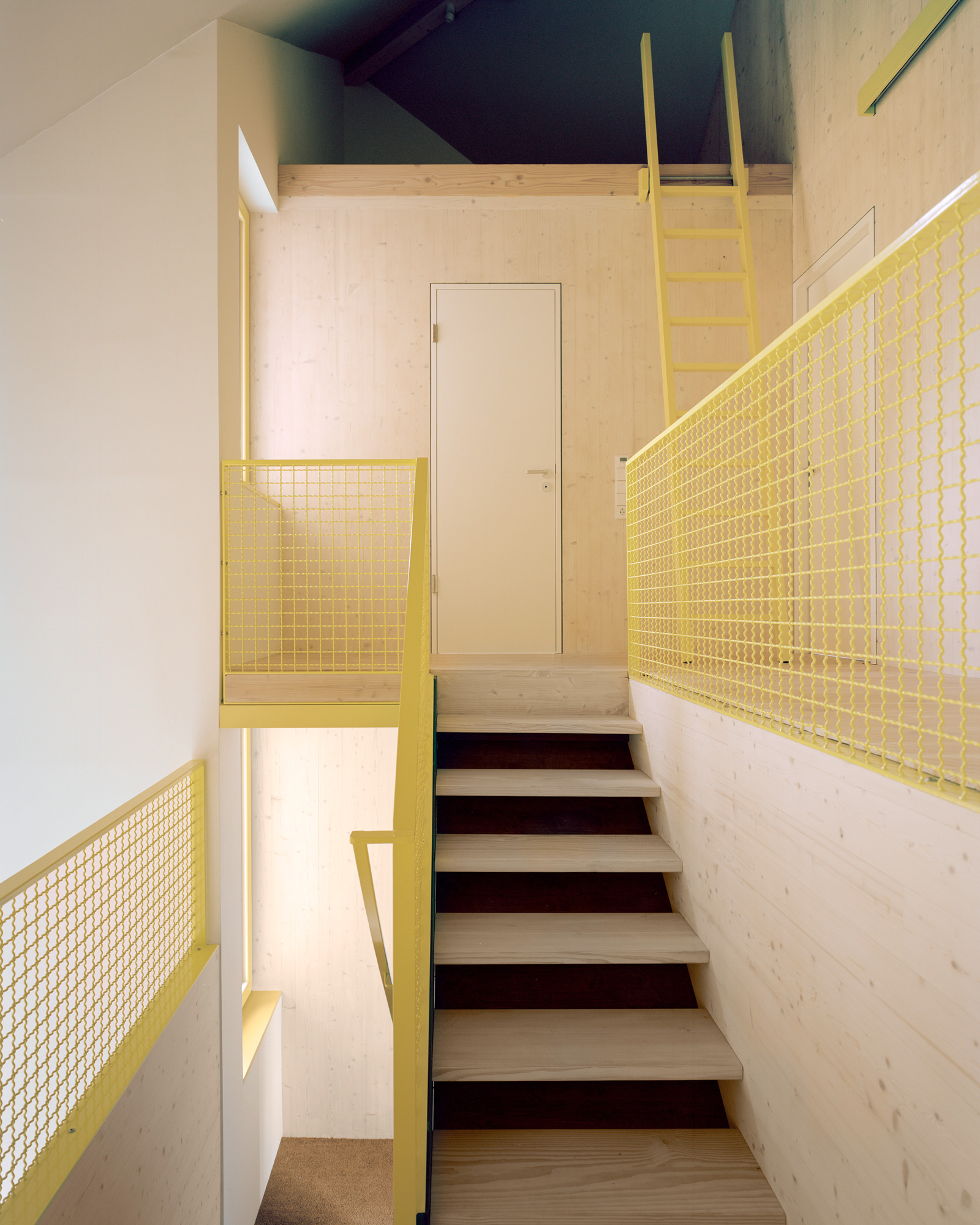
Construction & Materiality
The staggered concrete table supports the wooden structure of the building to protect it from snow and water. From above, the large roof protrusion protects from the outside the facade sheathing made from native Douglas fir, which was laid horizontally and vertically to reduce waste, depending on the requirements and according to the openings. The exterior walls are resource-saving timber frame construction and the interior walls are made of cross laminated timber.
All materials were carefully chosen with a focus on local materials, resilience and patina ability. Wooden floors, and wedge steps of the stairs are made of Douglas fir, the exposed cross-laminated timber elements were treated with white pigmented oil, so as to preserve the light hue of the wood. The window frames pick up on the blossom colour of the maple in front of the house, and the furniture and panelling are reminiscent of green loden. In contrast, the petrol-coloured staircase body and sun blinds add accents of colour. Overall it is a joyful house with echoes to traditional building forms and building types. A new, casual black forest type.
Project Details
- Design and Construction: 2016-2021
- Location: Menzenschwand, Deutschland
- Architect: AMUNT Nagel Theissen, Stuttgart
- Client: private
- Floor Space: 109 m²
- Gross Floor Area: 197 m²
- Structural Engineer: Felix Mildner, Tübingen
- Construction Supervisor: Rolf Haselwander, Dachsberg
- Cabinet Maker: Markus Stoll, Schreinerei Stoll
- Photography: Rasmus Norlander


